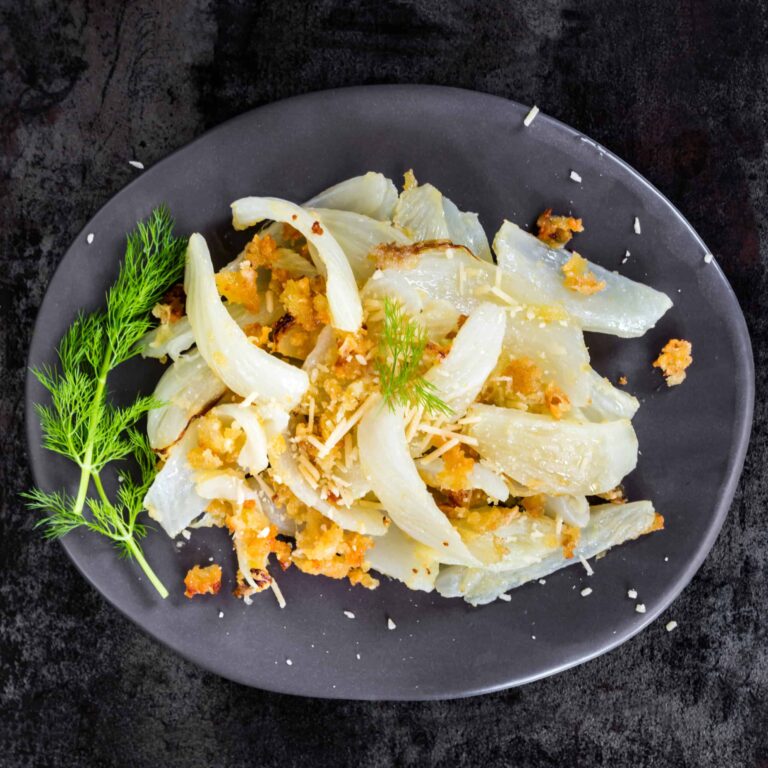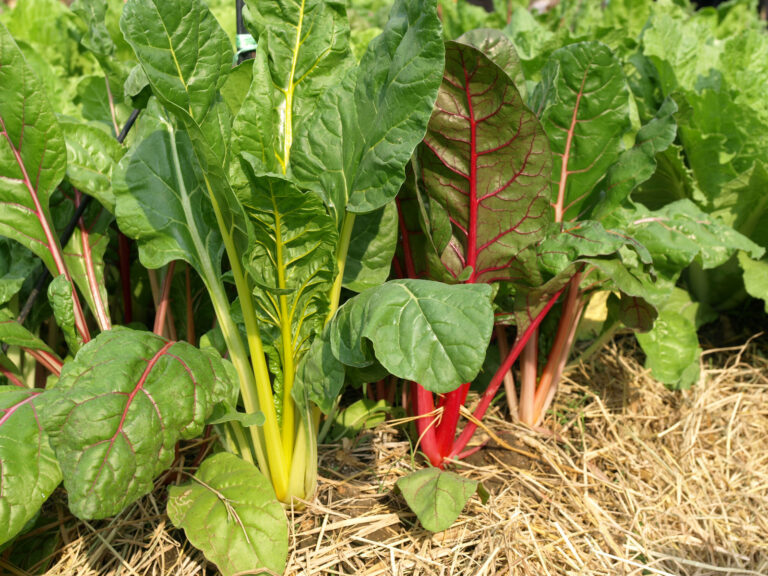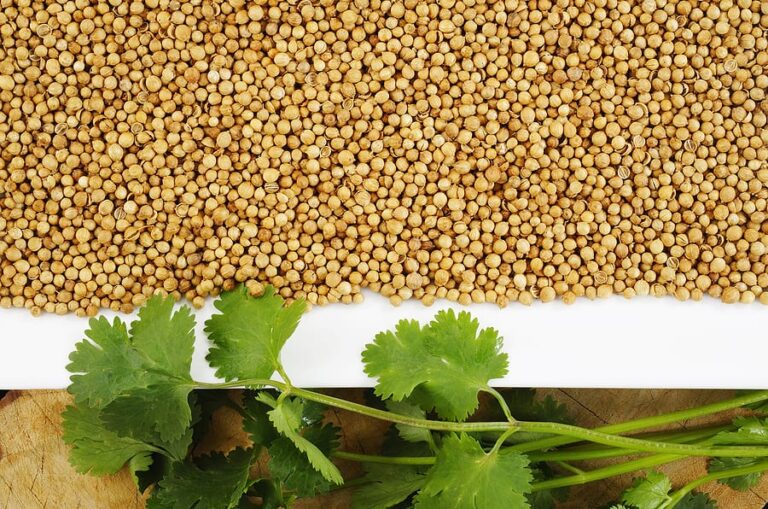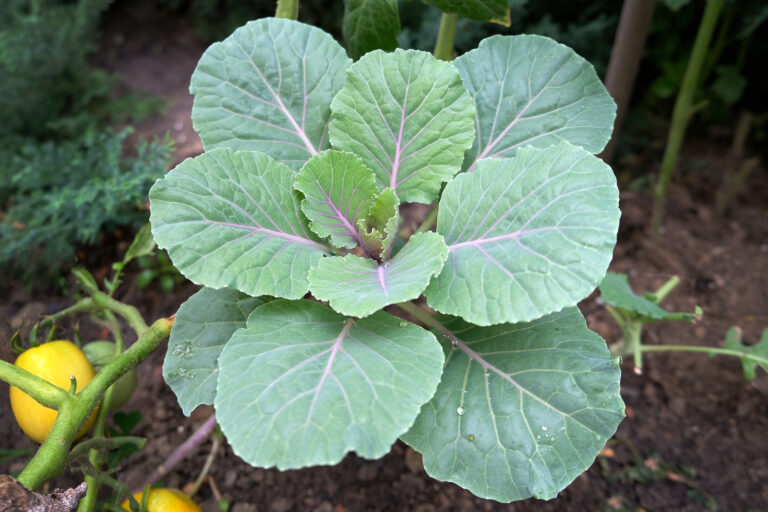How to Prepare Sorrel Raw or Cooked
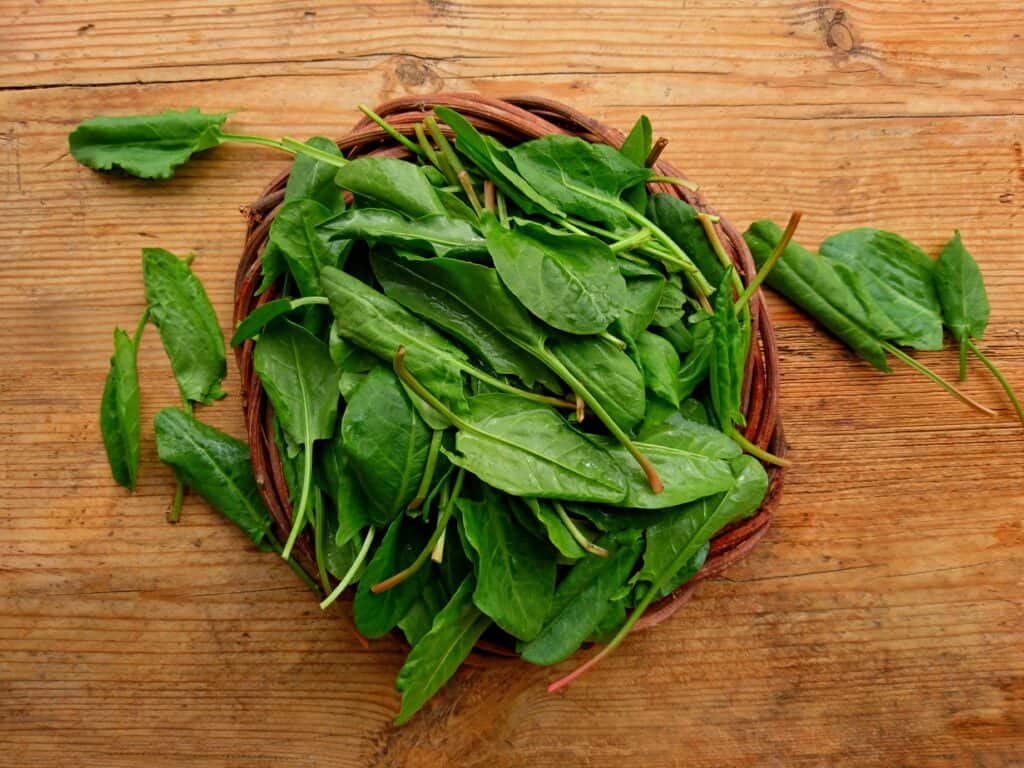
Sorrel has a lemony tang and succulent spinach texture that makes it a tasty fresh leafy addition to mixed-green salads, sandwiches, soft cheeses, omelets, and other egg dishes.
Cook sorrel with leek soups, cream-based sauces, stuffings, veal, and pork. Sorrel can be used as a potherb and is ideal for lining the vessel for baking fish.
Two Types of Sorrel
- Common sorrel grows to 36 inches (90 cm) tall and produces leaves up to 6 inches (15 cm) long. Common sorrel is sometimes referred to as sour grass or broadleaf sorrel.
- French sorrel is a more sprawling plant growing to about half the height of common sorrel. French sorrel has broad, fiddle-shaped, gray-green leaves, shorter than common sorrel. French sorrel is sometimes called white sorrel, lettuce sorrel, blonde sorrel, or buckler leaf sorrel and is preferred by cooks because it is more delicate and milder flavored than common sorrel. However, French sorrel can be more difficult to find in markets than common sorrel.
How to choose sorrel
- Select young, tender sorrel leaves for the best flavor. Leaves should be bright green.
- Young, tender sorrel is best with salads and other greens; otherwise, use sorrel cooked. Medium to large sorrel leaves are likely to be too acidy for use uncooked.
- Avoid leaves that are yellow or wilted and stem that look woody.
- Sorrel wilts quickly after picking but does not lose its flavor.
- Sorrel’s dark green leaves are lance- or arrowhead-shaped with deep slender stems. For that reason, they are sometimes mistaken for spinach.
How to store sorrel
- Sorrel is best used fresh but will keep in a plastic bag in the vegetable crisper of the refrigerator for up to 3 days. Refrigerate sorrel unwashed.
- Sorrel can be cooked briefly and then frozen for use as a sauce later. It does not dry well.
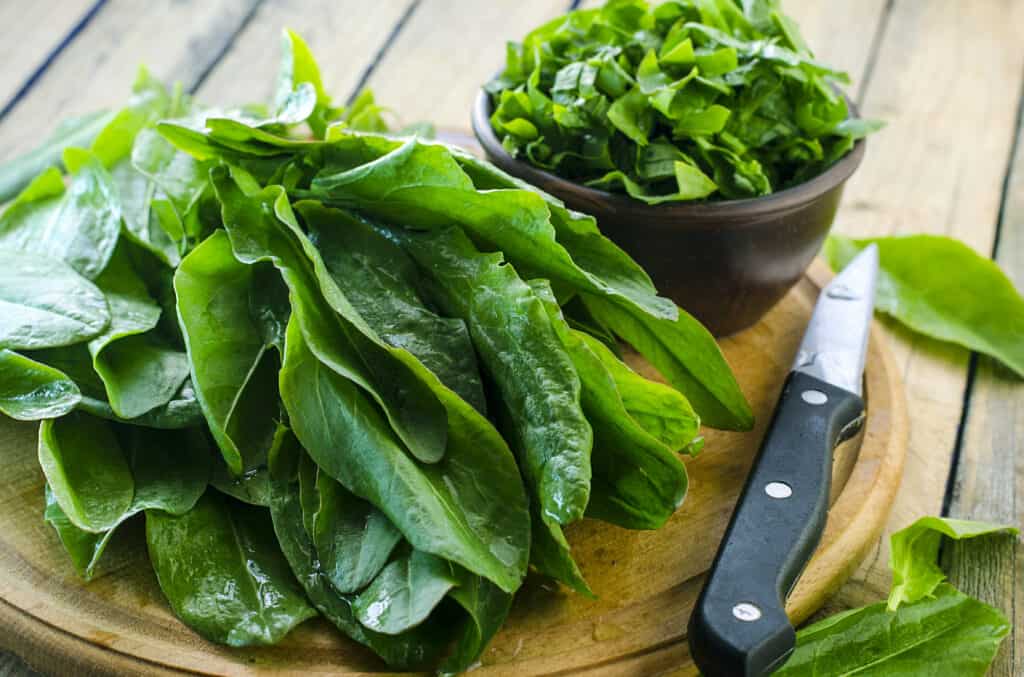
How to prepare sorrel
- To keep sorrel fresh, do not wash the leaves until just before eating. Immerse the leaves in water and shake them delicately but do not soak them.
- Cook sorrel with the stems removed. To remove the stems, simply fold the leaves in half lengthwise and pull off the stem.
Sorrel serving suggestions
- Sorrel can be served raw or cooked.
- Use raw whole French sorrel and shredded garden sorrel in salads. They will have a zesty spinach flavor. Reduce the vinegar or lemon in accompanying dressings to compensate for the acidity of sorrel. Whisk a little honey or sugar into the dressing to counter sorrel’s acidity.
- Adding lettuce leaves to sorrel moderates its flavor raw.
- Sorrel makes a good garnish for fish and veal.
- Sorrel can be used to tenderize meat: wrap around steaks or add pounded leaves to marinade.
- Italian salsa verde is made from raw sorrel, watercress, and onion chopped and blended to a creamy emulsion with oil and vinegar; serve with poultry or fish.
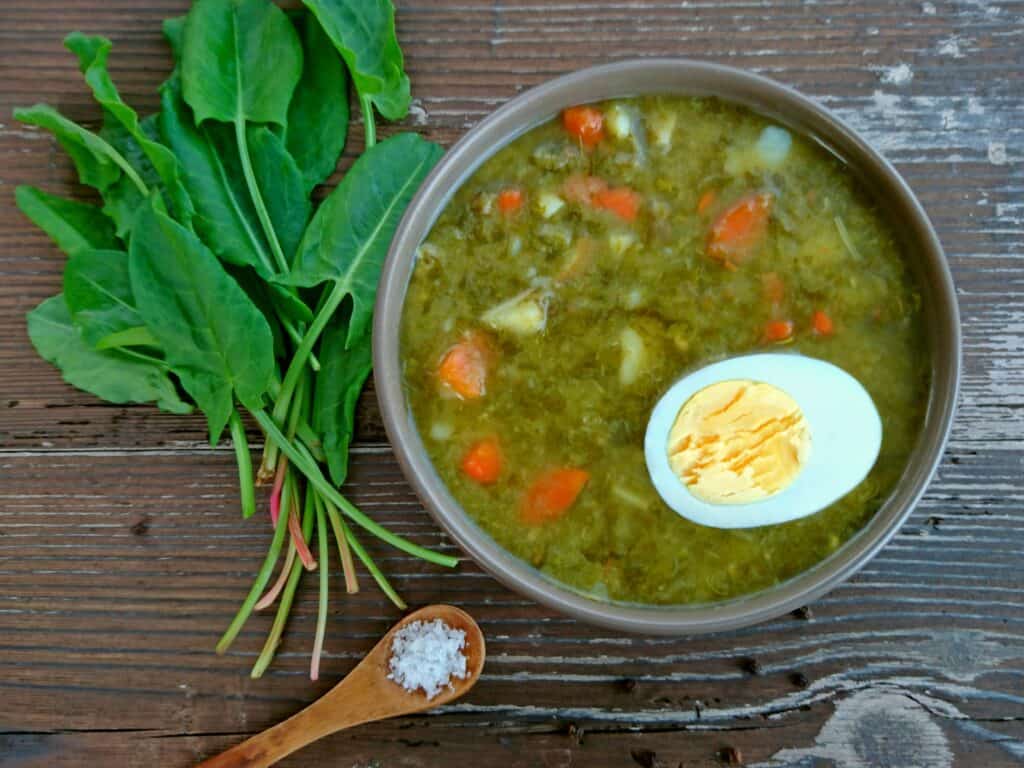
Sorrel cooking suggestions
- Cook sorrel in the same way as spinach, lightly steamed or boiled.
- Sorrel stalks can be cooked like rhubarb.
- The acidity of sorrel is tamed by cooking in butter or cream or by topping sorrel with a cream sauce. Sorrel soups are commonly thickened with eggs and cream. Sorrel simmered in butter becomes a tasty side vegetable served with salmon or trout.
- The French stuff whole shad with sorrel purée.
- Steam leaves until wilted or cook them in a little butter.
- Sorrel cooks and reduces in volume quickly. The cooked leaves may turn a drab khaki color.
- Sorrel is best served in combination with other foods.
- Add a few shredded leaves to baked and scrambled eggs.
- Fill an omelet with sorrel cooked in butter with shallots.
- Add sorrel to creamy dishes and sauces. To make French sorrel sauce, cook the sorrel in a little butter, add fish or chicken stock and cream and stir until smooth.
- Stir shredded sorrel into creamy potato or leek soups just before serving.
- In Eastern Europe, slices of smoked sausage are used in creamy sorrel soup.
How to wilt sorrel
- Cook sorrel in a saucepan or a skillet with just the water that clings to the leaves after washing.
- Add a sprinkling of salt and place the pan over low heat.
- Cover the pan so that the sorrel steams in its own liquid.
- Shake the pan occasionally to prevent the sorrel from sticking to the bottom. Sorrel will cook in 4 to 6 minutes wilting down to about an eighth of its volume.
- Drain and press out the remaining liquid.
- Chop and serve with lots of butter.
Wilted sorrel can also be prepared with minced garlic sautéed garlic in olive oil or hardboiled eggs.
How to steam sorrel
- Wash the sorrel and arrange it so that all the stems are going in the same direction.
- Place a steam basket in a pot with an inch or two of water; the basket should not touch the water.
- Bring the water to a boil and set the sorrel in the basket.
- Steam the sorrel for 2 to 4 minutes.
- Arrange the sorrel on a serving dish, spoon melted butter over, and serve with lemon wedges.
How to purée sorrel
- Wilt the sorrel as directed above.
- Drain or dry the sorrel as much as possible.
- Purée in a food processor or chop it by hand, add 4 to 6 tablespoons of melted butter, 2 tablespoons of heavy cream, and a dash of nutmeg, then blend well.
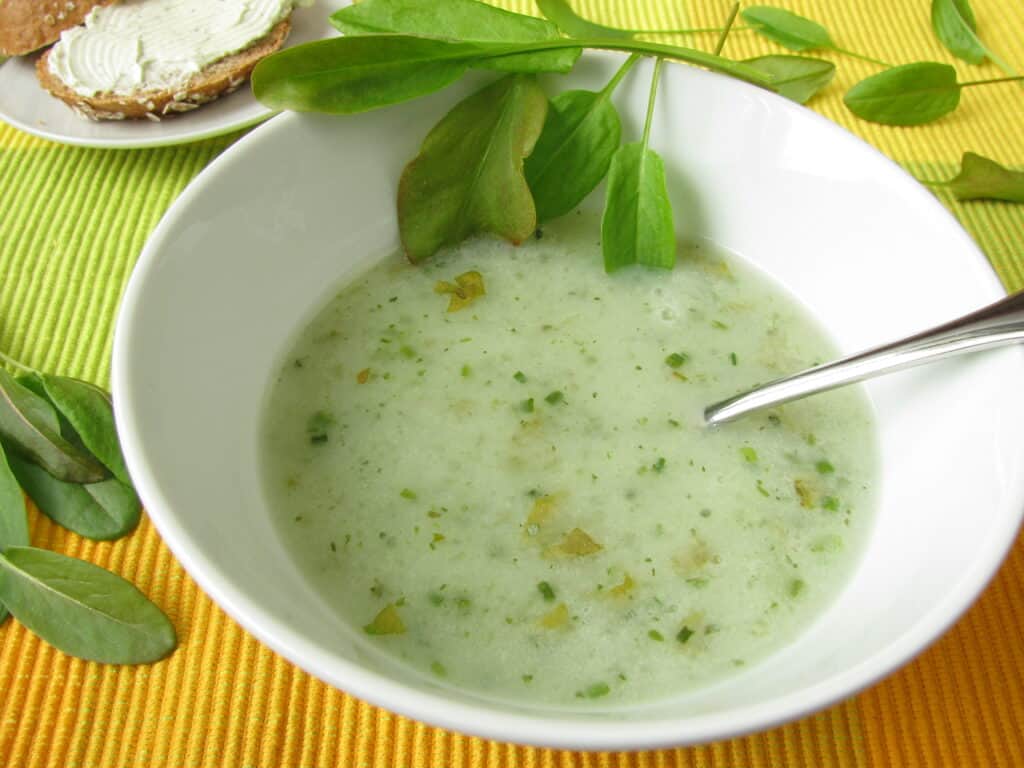
How to make sorrel soup
- Wash and clean the sorrel and cut off large stems.
- Sauté diced onion for several minutes in olive oil and butter until it softens.
- Add minced garlic and cook for 1 more minute.
- Add 4 tablespoons of flour and cook for 3 or 4 more minutes
- Remove the pan from the heat and whisk in 2 cups of heated vegetable stock or water.
- Return to the heat and add the sorrel, a bit of chopped parsley, and salt and pepper to taste.
- Cook until the sorrel wilts; cover and simmer for 10 minutes.
- Puree with an immersion blender or in a blender.
- Add milk or water to the desired thickness.
- Heat and adjust the seasoning.
- Serve garnished with sour cream or yogurt.
Sorrel flavor partners
- Sorrel has a flavor affinity for butter, soft cheeses, chicken, cucumber, eggs, fish (especially salmon), lamb, leeks, lentils, lettuce, mussels, pork, potato, salmon, scallion, shad, shallots, sour cream, spinach, sweetbreads, tomatoes, and veal.
- Sorrel combines well with borage, chervil, chives, dill, lovage, parsley, and tarragon.
Sorrel nutrition
- Sorrel is rich in potassium and high in vitamins A and C and oxalic acid.
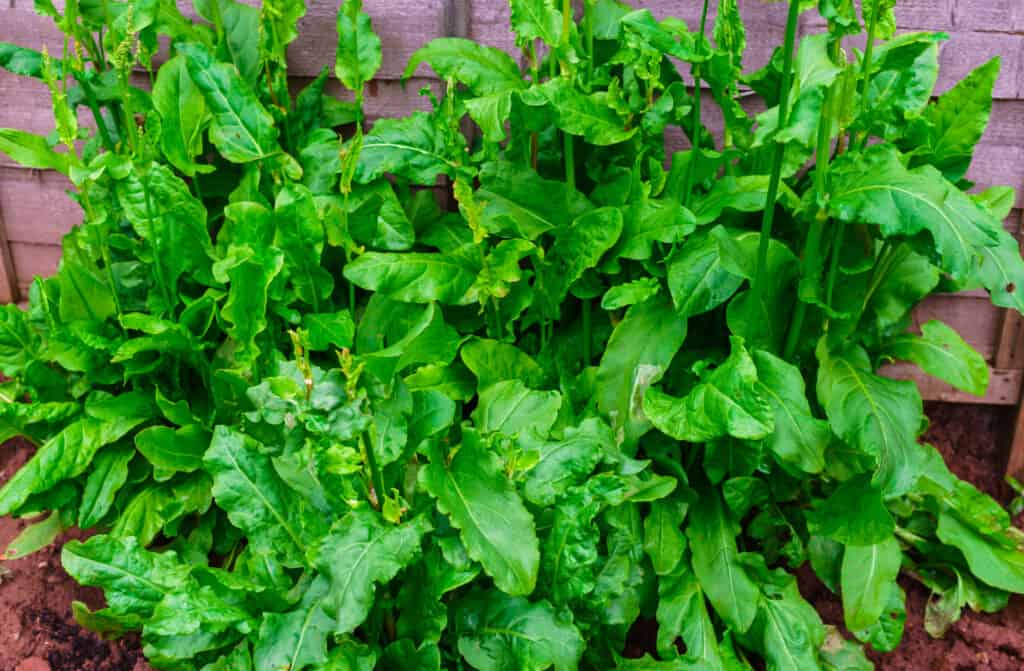
Get to know sorrel
- Sorrel can be harvested fresh from spring until winter when it dies down.
- Sorrel is a frost-hardy perennial that can also be grown as an annual.
- Sorrel is native to Europe and northern Asia. It has been used as a salad and cooking green since ancient times. The ancient Egyptians, Greeks, and Romans cultivated sorrel.
- The name sorrel comes from the old French word surelle meaning “sour.”
The botanical name of French sorrel is Rumex scutatus.
The botanical name of common sorrel is R. acetosa.
Sorrel articles on Harvest to Table:
How to Plant, Grow, and Harvest Sorrel
How to Prepare Sorrel Raw or Cooked
Articles of interest:
Best Herbs for Container Growing
Garden Planning Books at Amazon:
- Vegetable Garden Almanac & Planner
- Kitchen Garden Grower’s Guide Vegetable Encyclopedia
- Vegetable Garden Grower’s Guide
- Tomato Grower’s Answer Book
More kitchen tips:
Bring your harvest to the table. Kitchen prep tips and easy recipes for the vegetables you grow. Click below for vegetable prep and recipes you can use now.
- Almonds
- Apples
- Apricot
- Aprium
- Artichoke
- Arugula
- Asparagus
- Avocado
- Bamboo Shoots
- Banana
- Basil
- Beans, Dried
- Beans. Long
- Beans, Shell
- Beans, Snap
- Beets
- Bitter Melon
- Blackberry
- Bok Choy
- Broccoli
- Broccoli Raab
- Brussels Sprouts
- Cabbage
- Cardoon
- Carrots
- Cauliflower
- Celeriac
- Celery
- Chard
- Chayote Squash
- Cherimoya
- Cherries
- Chestnut
- Chickpea
- Chinese Cabbage
- Chives
- Cilantro
- Citron
- Clementine
- Collards
- Coriander
- Corn, Sweet
- Corn, Baby
- Corn Salad, Mache
- Cranberry
- Cress
- Cucumber
- Daikon
- Dandelion
- Dill
- Eggplant
- Endive, Belgian
- Endive and Escarole
- Fava Beans
- Fig
- Florence Fennel
- Garlic
- Ginger
- Grapefruit
- Grapes
- Guava
- Horseradish
- Jerusalem Artichoke
- Jicama
- Jujube
- Kale
- Kiwifruit
- Kohlrabi
- Kumquat
- Leeks
- Lemongrass
- Lemons
- Lettuce
- Lime
- Mache (Corn Salad)
- Mandarin Orange
- Mango
- Maple Syrup
- Marjoram
- Melons
- Michihili
- Mint
- Mizuna
- Mushrooms
- Mushrooms, Cremini
- Mustard Greens
- Napa Cabbage
- Nectarine
- Okra
- Olives
- Olive oil
- Onions
- Oranges
- Oregano
- Parsley
- Parsley Root
- Parsnips
- Passion Fruit
- Pawpaw
- Peaches
- Pears
- Peas, Garden Snap
- Peas, Snow
- Pei Tsai
- Peppers, Chili
- Peppers, Sweet
- Persimmon
- Pineapple
- Pineapple Guava
- Plantain
- Plums
- Pluots
- Pomegranate
- Potatoes
- Prickly Pear
- Pumpkin
- Quince
- Radicchio
- Radishes
- Raspberries
- Rosemary
- Rhubarb
- Rutabaga
- Sage
- Salsify
- Sauerkraut
- Savory
- Shallots
- Sorrel
- Spinach
- Squash, Summer
- Squash, Winter
- Strawberries
- Sunchokes
- Sunflower
- Sweet Potato
- Swiss Chard
- Tangerine
- Taro
- Tarragon
- Thyme
- Tomatillo
- Tomato
- Turnip
- Turnip Greens
- Yams



